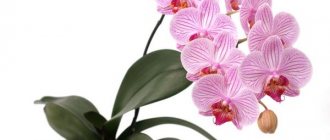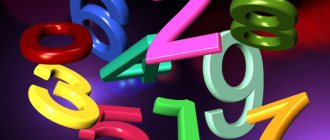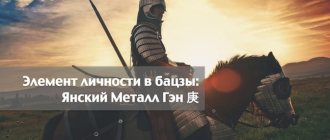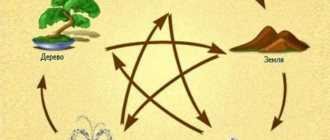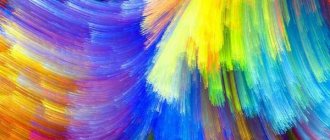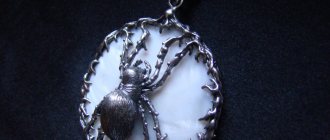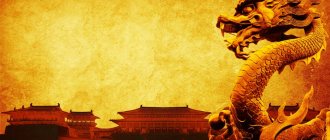In the Universe, everything that happens and exists explains the interaction of Yin-Yang, or trigram called Bagua. Chi energy is constantly moving. When it moves, it thereby contributes to the birth of Yang (activity), and when it enters calm, it becomes the source of Yin (passivity). The interaction of these two types of energy is the source of everything that exists in the world.
Both of the above energies are indicated by two lines. Yin is a broken line, while Yang is a continuous line. When each of them is separated, four types of energy are released. After this, the division occurs into 8 trigrams, where each component corresponds to the original energy (Yang or Yin).
Note! Each Bagua sector also has its own Gua number. It is different for each person, it can be calculated by year of birth.
Eight Trigrams Technique
The main role in the prediction system of the Book of Changes is played by eight trigrams (fortune-telling signs) bagua (Tib. parka, Mongolian suudal) - combinations of three features that denote an eightfold set of universals:
===
=== Qian - creativity, fortress, sky, father. Symbol of creativity. Qian consists of three continuous lines. This trigram symbolizes the northwestern position and is associated with the head of the family (usually the father). The rooms (study, master bedroom, dining room) used by this person are located well if they are in the northwestern part of the apartment. Qian symbolizes strength, determination and perseverance. Late autumn and early winter are associated with this trigram.
===
= =
= = Kun - fulfillment, dedication, earth, mother. Symbol of receptivity. Kun consists of three broken (Yin) lines. Kun symbolizes the southwest and maternal qualities. Accordingly, this trigram is associated with the mother and the rooms she occupies - the kitchen and the workroom. Kun symbolizes the relationship between husband and wife and represents summer.
= =
= =
= = Zhen - excitement, mobility, metal, first son. Symbol of concern. Zhen consists of two broken (yin) lines over one continuous (yang) line. Zhen represents the eastern direction and the eldest son. Therefore, it is best to place the eldest son’s bedroom in the east. This trigram symbolizes determination and the unexpected. The season associated with this trigram is early spring.
===
= =
=== Kan - immersion, danger, water, second son. Symbol of the abyss. Kan consists of one continuous yang line between two intermittent yin lines. She represents the northern direction and the middle son. Thus, the optimal bedroom location for the middle son is in the north. This trigram symbolizes ambition and hard work. The season associated with this trigram is winter.
= =
===
= = Gen - stay, inviolability, mountain, third son. Symbol of calm. Gen consists of two broken Yin lines under one continuous Yang line. Gen corresponds to the northeast and the youngest son, whose room should be located in the northeast part of the house. Gen symbolizes stability, inward focus and unity. The season associated with this trigram is late winter.
= =
===
=== Xun - refinement, penetration, wood, first daughter. Symbol of softness. Xun consists of two continuous Yang lines located above one broken Yin line. Xun represents the southeast and the eldest daughter. Accordingly, it is better to place the eldest daughter’s room in the south-eastern part of the house. The trigram symbolizes integrity, intelligence and inner strength. The season associated with this trigram is late spring.
= =
===
= = Li - grip, clarity, fire, second daughter. Symbol of affection. Li consists of a broken yin line between two continuous yang lines. Lee is associated with the south and the middle daughter, whose bedroom should naturally face the south. The trigram symbolizes lightness, laughter, beauty and warmth. The season associated with this trigram is early summer.
===
= =
=== Blow - permission, joy, wind, third daughter. Symbol of joy. Dui consists of two continuous yang lines under one intermittent yin line. Dui corresponds to the west and the youngest daughter, whose bedroom is best located in the west. The trigram is associated with happiness, pleasure and joy. The season associated with this trigram is autumn.
===
These trigrams in all possible combinations form a universal hierarchy of classifications and schemes, which in visual symbols covers all aspects of reality - parts of space, periods of time, natural elements, numbers, colors, body organs, social and family situations, etc.
Fu Xi "Early Heaven" [edit]
Fuxi bagua arrangement "Early Sky"
| Name | Nature | Season | 性情 personality | family | Direction | 意義 Meaning |
| 乾 Qian | 天Sky (Heaven) | In summer | creative | 父 Father | South | 健Expansive energy, sky. For more information, see Tiān. |
| 巽Xùn | 風 wind | In summer | Gentle | 長女 Eldest daughter | 西南Southwest | 入Soft penetration, flexibility. |
| 坎 Kǎn | water | Autumn | Horrible | 中男 Middle son | West | 陷Danger, fast rivers, abyss, moon. |
| 艮 Gene | Mountain | Autumn | Still | 少男 youngest son | 西北Northwest | 止immobility, immobility. |
| 坤 Kun | 地 Earth | Winter | Susceptible | 母 Mother | North | 順Energy of perception, bestowing. For more information, see Dì. |
| 震 Zhen | 雷 thunder | Winter | Exciting | 長男 Eldest son | Northeast | 動Excitement, revolution, division. |
| 離 Li | 火 fire | Spring | clinging | 中女 Middle daughter | East | 麗Fast movement, shine, sun. |
| 兌 Duì | 澤 lake | Spring | Glad | 少女 youngest daughter | South East | 悅Joy, satisfaction, stagnation. |
This is also known as the "binary sequence" or Shao Yun sequence. The binary interpretation of each hexagram is done by interpreting yin as "0" and yang as "1" and reading the first "digit" from within the diagram, so the hexagram is kun
interpreted as 0 and
gene
as 1. Hexagrams are in binary order when read from bottom to top right, then left to top.
[ clarification needed
] [
citation needed
]
Trigrams in Buddhist astrology
In the Buddhist astrological tradition, these trigrams are used to determine the eight-day and eight-year cycle of a person’s psychophysical state, as well as the favorableness or unfavorability of his presence at a certain time in a certain space.
In this case, the trigrams are arranged in an order slightly different from the Book of Changes: Fire - Earth - Metal - Sky - Water - Mountain - Wood - Wind. Each trigram points to one of the four cardinal directions and four intermediate directions - a total of eight directions: Fire - South; Earth - South-West; Metal - West; Sky - North-West; Water - North; Mountain - Northeast; Tree - East; Wind - Southeast.
In addition, the position of each trigram also has its own eight cardinal directions: four of them are favorable and four are unfavorable:
The general arrangement of trigrams is as follows (see table):
| 2 | 1 | 5 | 7 | 6 | 4 | |||
| Fine | Fine | Badly | SE | south | skid | Badly | Badly | Fine |
| Fine | Fine | Badly | SE | south | skid | Badly | Badly | Fine |
| Fine | tree | Badly | East | + | west | Badly | metal | Fine |
| 7 | 4 | 6 | St. | north | nw | 2 | 5 | 1 |
| Badly | Fine | Badly | Fine | Badly | Fine |
If you establish which trigram a person has this year and determine its location, then you can calculate which side is favorable for this person and which is not. The calculation is made as follows: for a man - starting from the trigram Fire according to the number of his years (including the intrauterine year) clockwise; for a woman - starting with the trigram Water according to the number of her years (including the intrauterine year) counterclockwise. If, according to the Buddhist counting system, a man (boy) turned 8 years old this year, then this year will pass for him under the sign of Wind, if 18 - Earth, if 29 - Water, etc.; if a woman (girl) is 8 years old, then her sign will be Sky, if 18 - Mountain, if 29 - Fire, etc.
For example, if this year passes for a person under the sign of Tree, and he needs to go to the West, then since this direction is unfavorable for him, before the trip he visits a temple (datsan) and orders a special prayer.
How they are created
The Bagua trigrams together form an octagonal figure. It clearly describes all the processes and events taking place in the Universe and in our world. In fact, most feng shui teachings are based on this octagon.
By the way the lines are combined, you can find out what energy is transferred in it - movement or calm. If trigrams have identical types of the same polarity, they are designated as extreme Yin or Yang. Visually indicated, they look like one continuous or one interrupted line.
Note! Other combinations of the Bagua trigram denote one Yin or Yang line and 2 opposite ones. The essence of each is determined by a feature found in one copy - it is the leading one.
Other combinations of the trigram are made up of one “Yang” or “Yin” and the remaining two lines, which have the opposite direction. For example, if a population includes one solid "yang" trait and the others are "yin", it will be defined as belonging to yang.
Characteristics of eight sides
- The side of the breath of life: in this side it is good to woo a bride, make a long journey, invite a lama teacher, call on a patron spirit. There is a ban on sacrifices to deities and raid hunting;
- Side of health and medicine: in this side it is good to invite a doctor, order medicine, perform a cleansing ritual, eat food;
- Side of wealth: in this side it is good to buy goods and livestock, sow grain, perform the ritual of increasing wealth;
- The side of the fire of life and the Horse of the Winds: in this side it is good to go on a journey, bring a bride to the house, burn incense, hang symbols of worship of deities (flags and scraps of material) in the wind;
- Side of Harm: In this side one should not take a bride, acquire or buy goods and livestock. Garbage is usually thrown in this direction;
- Side of the Five Barriers (demons): in this side, the ban on inviting a doctor and going on a long journey is observed; to protect against the dangers emanating from this side, the ritual of “correction” is performed;
- End of life side: in this side, the prohibition of doing things related to life and well-being is observed;
- The side of evil spirits: in this side, the ban on holding sports competitions and horse racing, on the purchase and acquisition of goods is observed, the ritual of cleansing from bad deeds and imposing a ban on them is performed.
Links[edit]
- CHEN, Xin (tr. Alex Holstein). Illustrated Canon of Chen Family Taijiquan, INBI Matrix Pty Ltd, 2007. p. 11. (accessed on Scribd.com, December 14, 2009)
- ^ ab Wilhelm, Richard (1950). I Ching or Book of Changes. translated by Carey F. Baynes, prepared by C. G. Jung, preface to the 3rd ed. from Hellmut Wilhelm (1967). Princeton, NJ: Princeton University Press. pp. 266, 269. ISBN 069109750X.
- TSUEI, Wei. The roots of Chinese culture and medicine. Archived August 12, 2012, at the Wayback Machine Chinese Culture Books Co., 1989.
- Zong Yi-Fan and Liscum, Gary. Chinese Medical Palmistry: Your Health in Your Hand, Blue Poppy Press, 1999.
- "Extraordinary Theory and Applications Related to the Master". theory.yinyanghouse.com
. - Wilhelm, R. and Baines, K., (1967): "The I Ching or the Book of Changes", with a preface by Carl Jung, Introduction, Bollingen Series XIX, Princeton University Press, (1st ed. 1950)
- Chun Min Chan, 《由《輔行訣臟腑要》到香港當代新經學》, Amazon, [1]
- Cisek, January Feng Shui London Blog, 2007.
- Moran, Elizabeth and Master Yu, Joseph. The Complete Idiot's Guide to Feng Shui, 3rd Edition, Penguin, 2005.
Exposure to the Eight Bagua Elements on the Days of the Week
- The day under the influence of the FIRE element is favorable for blacksmithing, wearing jewelry, praying and visiting the temple, and performing virtues. Unfavorable for reconciliation, bringing a bride to the house, slaughtering livestock, conducting military operations and translating works from one language to another.
- The day of influence of the EARTH element is favorable for carrying out excavation and agricultural work, traveling in an easterly direction, renouncing an oath and getting rid of damage. Unfavorable for laying foundations, funerals, ablutions and performing prayers.
- The day under the influence of the METAL element is favorable for cutting wood, hunting and traveling in an easterly direction. Unfavorable for teaching a child to walk and sending him anywhere from home.
- The day of exposure to the SKY element is favorable for meetings with famous and influential people, performing virtues and the ritual of removing damage (gurum). Unfavorable for treating diseases, carrying out construction work, moving and trading.
- The day under the influence of the WATER element is favorable for performing prayers and sacrifices to the nagas, returning what was borrowed or for temporary use, and artistic metal processing. Unfavorable for crossing a river, spells of evil spirits of the area, fishing, taking an oath, earthworks and fighting enemies.
- The day of influence of the MOUNTAIN element is favorable for performing prayers and sacrifices, starting spiritual practice, training a horse, laying a foundation and carrying out construction work. Unfavorable for starting important and large affairs, trading and reading.
- The day under the influence of the TREE element is favorable for performing prayers and sacrifices, wearing jewelry, planting trees, determining a place to settle and laying the foundation for a house.
- The day of influence of the WIND element is favorable for pronouncing a mantra, repaying debts, in order to calm an angry person and for all “heavy” matters. Unfavorable for taking an oath and holding meetings.
May 6, 2021 at 1:20 p.m.
© Tanaka Eliza
King Wen "Late Sky" [edit]
King Wen Bagua arrangement "Later Heaven"
| Name | Nature | Season | 性情 personality | family | Direction | 意義 Meaning |
| 離 Li | 火 fire | In summer | clinging | 中女 Middle daughter | South | 麗Pulsating movement, radiance, luminaries. |
| 坤 Kun | 地 Earth | In summer | Susceptible | 母 Mother | 西南Southwest | 順Energy of perception, bestowing. |
| 兌 Blow | 澤 lake | Autumn | Glad | 少女 youngest daughter | West | 悅Joy, satisfaction, stagnation. |
| 乾 Qian | Heaven | Autumn | creative | 父 Father | 西北Northwest | 健Expansive energy, sky. |
| 坎 Kan | water | Winter | Horrible | 中男 Middle son | North | 陷Danger, fast rivers, abyss, moon. |
| 艮Gen | Mountain | Winter | Still | 少男 youngest son | Northeast | 止immobility, immobility. |
| 震 Zhen | 雷 thunder | Spring | Exciting | 長男 Eldest son | East | 動Excitement, revolution, division. |
| 巽 Xun | 風 wind | Spring | Gentle | 長女 Eldest daughter | South East | 入Soft penetration, flexibility. |
×Teams×
¶Based on constant rotation.
The Gentle Fist technique has several techniques that allow you to use all aspects of the byakugan to its full power¶ ¶A technique based on eight changes, Eight Trigrams 64 Palms, allows you to most effectively knock out enemy tenketsu (chakra points)¶
¶Hyuuga enters a trance and begins an attack with 2 hits, then 4, 8, and so on until the last 64¶
¶In addition to punching tenketsu with their fingers, Hyugas use chakra that flows from their palms. That is, the enemy’s chakra circulation system is exposed not only to physical impact, but also to energetic impact¶
¶They can also inflict simply powerful physical damage. A more powerful version of this technique was demonstrated by Neji, 128 Heaven's Touch. Over the same period of time, he deals 2 times more attacks than usual¶
The Supreme Art of the Soft Palm
¶Neji is talented not only in the use of taijutsu, but also in the use of ninjutsu. Neji can perfectly control his chakra, both releasing it from individual parts of the body and the whole body at once¶
¶Also, Neji can change chakra and change its shape, and increase or decrease its amount¶
¶Tenten has dark brown hair in two buns and large brown eyes. In the first season, Tenten wears a light pink vest and blue pants. The girl is wearing a Konoha headband¶
¶In the second season, her clothing changes to a white tunic and burgundy pants. The girl carries a scroll attached to her back¶
¶During the Fourth Shinobi World War, she wears the standard Konoha uniform, complete with a holster around her waist containing two small scrolls¶
¶Two years later, Tenten is wearing a white kimono with a pink pattern, fishnet stockings, and black boots. Her hairstyle also changes: the girl takes off the Konoha bandage, and from the grown hair she forms a medium-long braid¶
¶A few years later, she wears the same outfit as in the second part, however, her pants are pink. Her hairstyle is reminiscent of her previous one: the buns are decorated with collected braids; the bangs become straight again¶
¶Tenten is portrayed as naturally inquisitive and observant, with a personal dream¶
¶This caused her to become a very stubborn woman, thinking that girls could be as skilled as boys in taijutsu¶
¶Tenten shows an aversion to being weak or overly dependent on other people. Although she can be quite bitter at times, Tenten is kind and caring towards others, comforting her friends when they go through difficult times¶
¶According to her team mates, Tenten is a highly skilled and capable kunoichi¶
¶Her knowledge of him is so high that the girl received the nickname “ninja weapons specialist” on the team¶
¶She has excellent aim. She never misses her target, knocking out 100/100 items¶
¶Her skills in fuuinjutsu are so broad that she has enough strength to seal even such impressive objects as a ship or a massive body of water¶
Source



